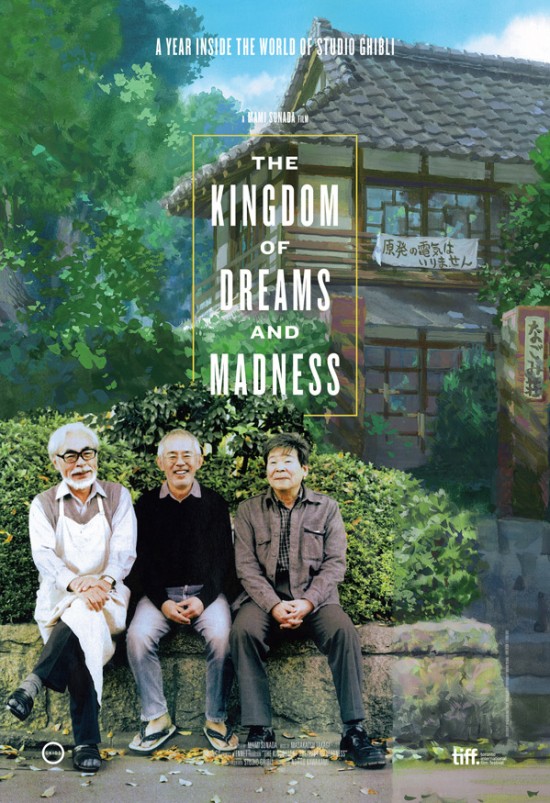'The Kingdom Of Dreams And Madness' Trailer: A Studio Ghibli Documentary With Hayao Miyazaki
The best documentaries take a great subject and then get hit by lightning. You're filming your movie and then, over the course of it, something incredible and magical happens that takes the story in a whole different way. For filmmaker Mami Sunada, unprecedented access into one of the most famous animation studios in the world, Studio Ghibli, was just the beginning. Things got very interesting when their most famous and revered filmmaker, Hayao Miyazaki, decided to announce his retirement.
The Kingdom of Dreams and Madness is the result of that crazy story. It's a documentary about the behind the scenes drama at Ghibli and the aftermath of Miyazaki making the bombshell announcement. A trailer for the film has now released in advance of a limited theatrical release November 28 and then a VOD window early in 2015. Check out the The Kingdom of Dreams and Madness, a Studio Ghibli documentary trailer, below.
Thanks to the GKids YouTube, via First Showing.
The Kingdom of Dreams and Madness, a Studio Ghibli documentary trailer
And here's a poster.

The Studio Ghibli documentary first premiered at the Toronto International Film Festival, and here's their description. What did you think of the trailer?
This engrossing documentary takes us inside Studio Ghibli, the renowned Japanese animation studio that created such classics as Spirited Away, Grave of the Fireflies, My Neighbor Totoro and Princess Mononoke.
Located in a Tokyo suburb, Studio Ghibli looks from the outside like a modest office building from. But behind its doors, some of the greatest creative talents in cinema work every day. These are the imaginations behind Spirited Away, Princess Mononoke, Grave of the Fireflies, My Neighbor Totoro, and Ponyo. Mami Sunada's documentary, The Kingdom of Dreams and Madness, takes us inside the Studio, offering unprecedented access to the work of producer Toshio Suzuki and world-renowned filmmakers Hayao Miyazaki and Isao Takahata.
Shooting Miyazaki at work on The Wind Rises (Festival 2013) and Takahata making The Tale of The Princess Kaguya (playing at this year's Festival), Sunada establishes Ghibli as an enchantingly old-fashioned workshop. Wearing a craftsman's apron at the office, Miyazaki toils on meticulous drawings that he times out with an analogue stopwatch. He often escapes to a nearby garden for breaks. Not oblivious to his reputation as perhaps the greatest animator in the history of cinema, he adopts the persona of a wise, kindly trickster. "Am I strange?" he asks. "Sure."
To watch Miyazaki, Takahata, and Suzuki in conversation with their teams is to begin to understand the success of Studio Ghibli. No detail escapes their attention. Whether it's the tough-minded Suzuki negotiating marketing elements or Takahata investigating how to adapt a tenth-century folktale for Princess Kaguya, the Ghibli team exhibits a patient, truly inspiring dedication to excellence. But Sunada avoids hyperbole, understanding that — though these men summon whole worlds from their psyches up onto the big screen — it would be a mistake to call them anything as grand as gods. Like many great artists, Miyazaki understands that he works in the service of his stories. "What drives animation is the will of the characters," he notes at one point. "You don't depict fate. You depict will."
